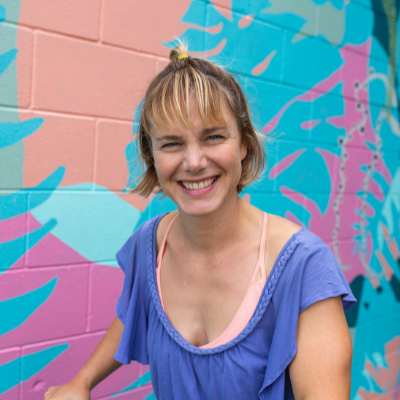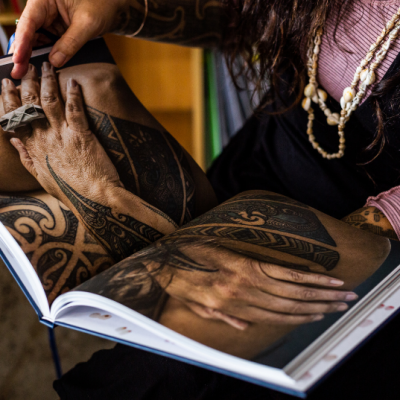Creative Patapatai
Faye Suzannah proves everyone can get around by bike if you plan ahead a little more thoughtfully. Her fight for the environment shines through her bright and beautiful mural work, which one can stare at for hours and still not discover all the hidden shapes.
Your occupation, job title, artistic discipline (or very brief description of what you do):
I mostly design and paint murals on commission. I screen-print art on paper when I can, and exhibit and sell this in a few galleries here and in the UK. I have set up an online shop of prints but have problems finding the time to be in there: even virtual shops need attending!
Generally, I’m full of ideas but I’ve learnt it’s important for me to actually stick to a few creative outlets rather than start lots of different things and get frustrated. Consistency is important to gain trust and experience. That’s why I have mostly stuck to murals for the last 12 years.
What cities/towns have you lived in (or spent more than a few months in) beginning with the place of your birth?
Glastonbury, Bristol, Brighton and London. Barcelona and Bilbao, Spain. Zarate, Argentina. Byron Bay, NSW. And, now, Papamoa, Bay of Plenty!
What are the earliest stories you remember hearing? The ones that told you about the world?
My grandparents worked in the Indian army and, consequently, my mum and uncles lived in a variety of places throughout their youth, including the United States, Germany and Africa. My grandpa’s stories of Pakistan and the way my mum described her time living in Morocco as a teenager have always held fast in my soul. Festival experiences living in Glastonbury and attending smaller folk festivals in the area have not so much ‘told me stories’ but have exposed me to a very broad spectrum of other ways to think and live.
What’s your favourite Bay of Plenty landscape, park, building, location, suburb, or side street? Why?
Over the 2 years I’ve lived here, the novelty of the Mount Hot Pools has never worn off. It is a luxury facility right beneath Mauao. It is well maintained, with a super chilled atmosphere, and very affordable for locals. I also love walking from the end of Waihi Beach along to Orokawa Bay. The peace of that bay with its overhanging pohutakawa, without a building in sight is pretty special.
What’s an average day in your life at present?
The thing about being a freelance creative is that no two days or weeks are the same.
Things that I prioritise every day are finding time to exercise and to prep/cook food from scratch for myself and my family. I’m not afraid to admit that my artwork is lower down on my list of priorities than maintaining physical and mental health.
Most of my early weekday mornings are dominated by parenting duties. On a good day, I will have gone for a run or done my yoga practice before the family has woken up, and then after daycare drop off I can settle down at my kitchen table for some classic mum-style task juggling: writing emails, designing murals, attempting to stay consistent on the socials while doing the laundry, soaking lentils, prepping fun or creative activities for my 3 year old (and cleaning up after the last one), walking the neighbour’s dog, or making it to the pool or an exercise class at some point, if I couldn’t quite get up for the 5.30AM alarm that day.
This mum juggle feels amazing when it works out, but very overwhelming when it doesn’t. Things generally get a bit out of whack when I spend a week or so out of the house painting a mural somewhere, but I space out my projects so that I can plan ahead for these times and try to overlap my basic needs. If I can cycle to an art meeting or a mural site while on a handsfree phone call to my landlord or a gallery back in the UK, then I’m at my happiest!
Having a small child with no family close by for support means that after our very routine family dinner at 6PM, we barely go out in the evenings. Mostly, I am cooking, asleep, in the sauna at Baywave, or on my yoga mat somewhere (but nowhere I can’t get to on my bike as I don’t have a drivers license). This has limited how I’ve felt about getting involved with other creative communities in this area; inevitably, someone will invite me to an exhibition opening or a talk on the other side of town after dark, and it’s just not doable. The buses are good but not that good!
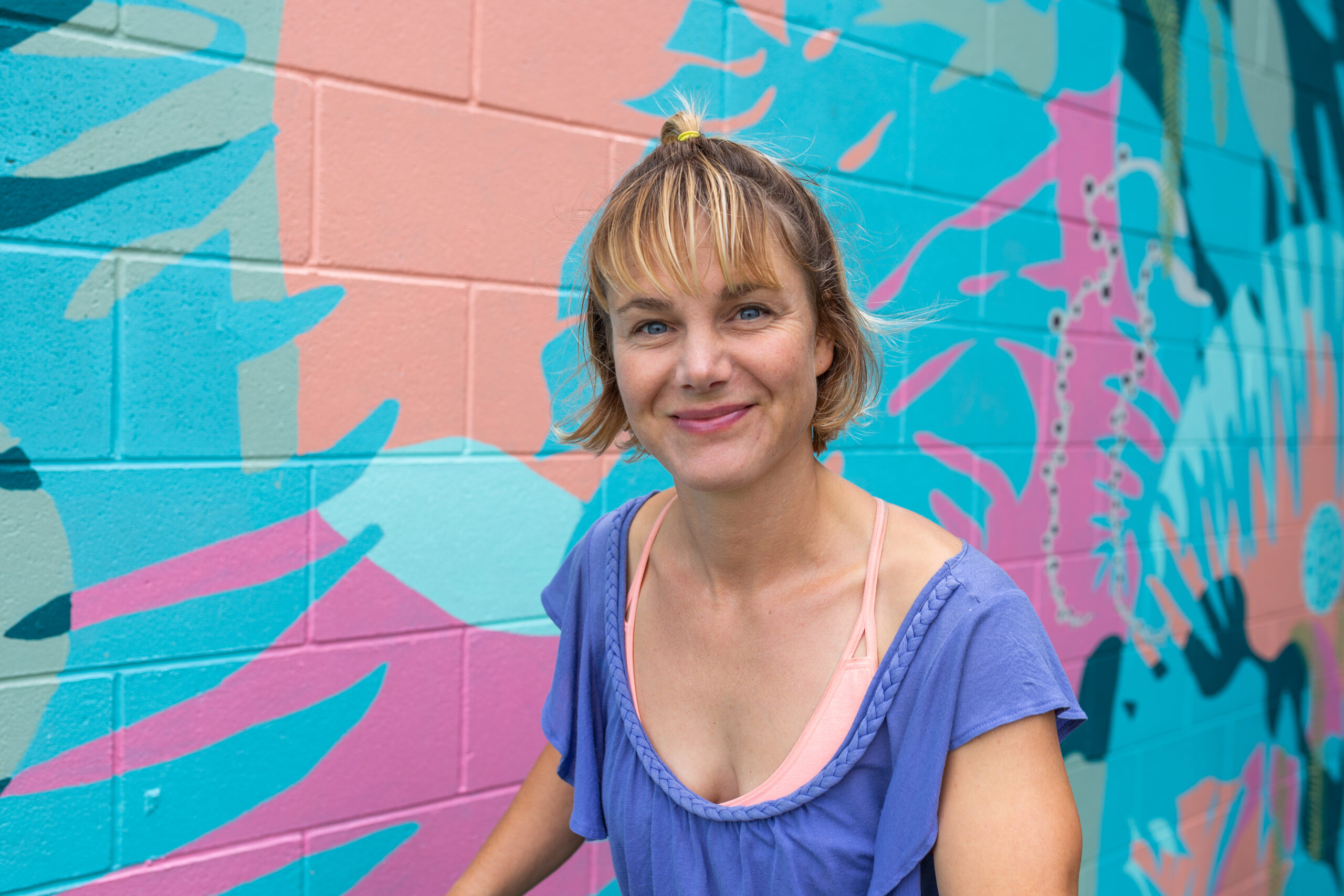
What music was present and still memorable from your youth/adolescence?
I was a classic teenage Drum and Bass raver in the late 1990s. Living near Bristol, we were totally spoilt for choice of if we wanted to go dancing, and we didn’t realise how influential those years would be on Drum and Bass music on a global scale. Roni Size’s ‘Brown Paper Bag’ and DJ Zinc’s ‘Supersharp Shooter’ take me back to being 17.
Since then, my guilty pleasure has become Latin American dance music. It really got in my ears during my time in Argentina and now any combination of a tropical/tribal/traditional sound mixed with bass-y beats really makes me burst inside. When my daughter and I watch the aqua Zumba class at the hot pools on a Wednesday morning I am so full of smiles it hurts!
For you as a creative person, who are three influential artists or thinkers?
This is tricky as I feel it changes constantly. We are so overloaded with information and access to creative work of all genres now, that it’s very difficult not to be freshly influenced almost every day!
My first memory of sheer inspiration was leafing through a book of US artist Jenny Holzer’s work around the age of 15. She influenced me a lot. “Protect me from what I want,” is so still so relevant. Maybe she is to blame for my austerity!
Banksy obviously changed the face of street art in a big way but I was never a fan of his work until I began to function on more of a business level with my craft and battle with my identity within that. Then I realised what a total genius he has always been. “The Dismaland” exhibition he coordinated in the Weston Super-Mare in 2015 was a real eye opener to the potential power of good art in the right place at the right time.
More currently I am in awe of Italian mural artist Tellas. His love and admiration of the small patterns and shapes in nature is so clear in the large scale murals he creates. They are somehow delicate and powerful all at the same time.
If you went away from the Bay of Plenty for a long time and then came back, what are the first three things you would do or visit?
I would run barefoot along the shiny, low tide beach from Papamoa to the Mount at sunrise, and then go to the Mount Hot Pools with the magnolia tree flowering outside. I’d get a maca mocha coffee with shrooms from Vitality Organics and also probably pop into the Natural Fit gym on Tawa St where my Street Prints mural is. Even though I haven’t exactly been a regular at the gym there, I feel it is one of the few places in the world where my creativity and my hyperactivity are both recognised, appreciated and supported, at the same time.
Looking back at your childhood self: what one sentence describes that person?
When I was five, a doctor told my mum: “Ooh, this one’s going to make an interesting adult.” I’m not sure exactly what he meant but it feels quite true.
If you had to eat the same meal every day, what would it be?
This is easy: any combination of potatoes, hummus and salad. A vegan dream.
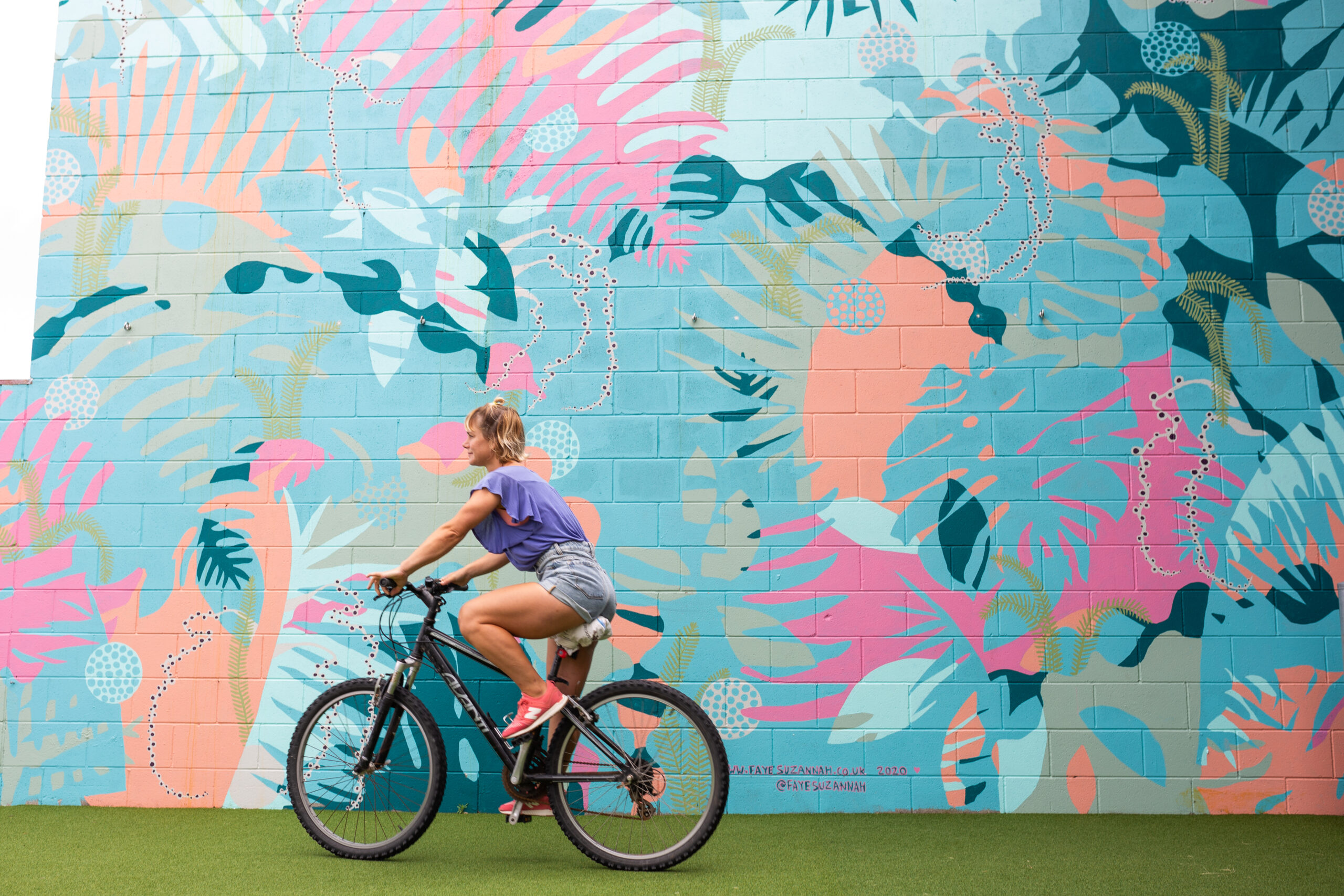
What are you planning for 2022 that nobody knows about yet?
After what will be nearly two-and-a-half years in Papamoa, we are all flying back to the UK in March. Yes, it’s one way. No, we don’t know if it’s for good. Yes, I realise life is a lot greyer back there and the basic social systems just don’t function quite as smoothly as they do in New Zealand, and there’s no way I’ll be getting as many art commissions, and there will be no beach to run on. But home is home. I need to check in and touch base especially after what the world and my Glastonbury community has been through over the last few Covid years.
Who are your favourite or most admired figures from history?
I have to admit I have never payed attention to history. Maybe there was just too much of it growing up in England. History felt like it represented a whole heap of traditions that were dragging us down rather than helping us move forward.
I have to admit Guy Fawkes was pretty ballsy though, wasn’t he? Tried to blow up the houses of parliament in London in the 1600s as an act of rebellion against increased oppression. The fact that November the 5th is celebrated still shows that he was, and never will be alone in his feelings of rebellion against the system.
If the Prime Minister asked you to make up a new policy or law for New Zealand, what would it be?
I feel that just as there has been extreme measures put into place to arrange social behaviour in terms of the pandemic, then the same could be applied to climate change action.
Imagine if you had to scan into your location, and when you did, it could tell how far you had come and on what mode of transport. If you had traveled fewer than 2km by car, on your own, then the red light would go off, and you wouldn’t be let in! Imagine the peace there would be on the roads, and how much less concrete would be needed, and how much healthier everyone would be!
So, a law to cover that? One car per family. If you can’t get to work or fit your whole family in one car, try to think more locally within your career, or teach your kids to ride bikes. Take a little bit more time to get to where you need to. The bus is also a totally good option. If you think you can’t carry all of your groceries home from the supermarket… Well, you have probably lifted 80kg in the gym, and boasted about it. Just try to put it into practise.
In one sentence, can you define art?
“Art should disturb the calm and calm the disturbed.” Cesar A. Cruz.
That includes during the making of it.
What is missing or lacking from your Bay of Plenty community or environment?
Fewer cars and more “wilderness”. There are so many amazing, well-maintained parks and reserves and walks and tracks around here, but it doesn’t feel like real nature to me for some reason. Yes, I’m complaining that everything is too neat, ha.
Name a few films that you consider profound, moving or extraordinary?
As you may have gathered, I don’t sit still very much, even to watch TV or films, so this is tricky.
One that stands out is Pleasantville. A bland monochrome world is slowly infiltrated by art and music and love, and as a result, the colour creeps into the film. Clever, stunning and cheesy!
Captain Fantastic shows a father desperate to bring up his children off grid in nature and outside of the grips of American culture. Very touching film and very brave in many ways.
Also, That Sugar Film is a bit of a doco but a very entertaining exposé about the sugar industry. Put down your doughnut from The Whipped Baker, and watch it. It will change your mind, your body and your life.
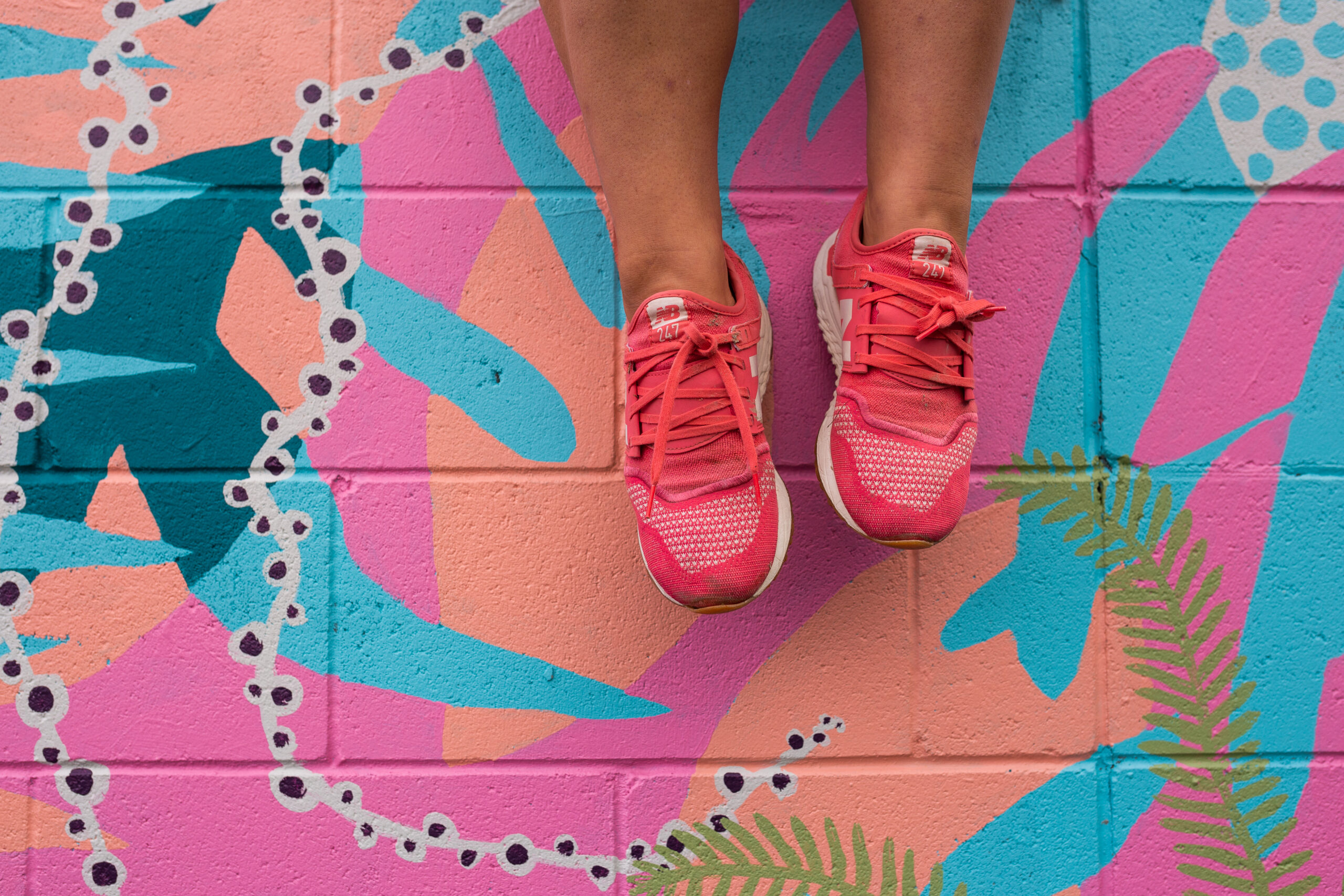
What was your first real job, second, third?
I have dodged “real” jobs fairly effectively my whole life. I have always felt like the 40 hour week was a bit of a trick created to control and limit society. My first and only real full-time job was in London at a fine-art screen printers, finishing and packing art prints worth a LOT of money from the most renowned Brit-artists at the time. I was getting to make tea for Damien Hirst but I hated every minute of it and only lasted 6 months.
Instead, I have worked on having a cheap life, exchanging skills wherever possible, not owning a car and cooking a lot of lentils. In saying that, I have had a number of part-time jobs including lifeguarding and swimming teaching at pools across the UK, shift work on a variety of very repetitive production lines making various foodstuffs and/or printing t-shirts. This “boring” work suits me as my mind is my own and I actually find a lot of comfort in doing the exact same thing over and over again.
Where would you like to live, but have yet to?
Mexico… The colour of the sky, the language, the food…
What word of advice would you offer an aspiring creative person?
Creating and analysing are two different processes; don’t do them both at the same time.
What’s the biggest problem about life in New Zealand? How you would solve it?
Car culture; way too much concrete required for roads and driveways and huge parking lots.
In so many places I’ve been in the world, the park or open public space/plaza forms the centre of the town. Here, it is the carpark where everyone is encased in their own metal bubble and doesn’t commune or build relations.
I’d solve it by somehow making it easier for the population to survive without three cars per family. Emphasising more localised jobs, increased education about how although the current car focused system seems “convenient” and we may save a little time here and there, we lose a lot too.
Living a little slower could actually save us time and money in a roundabout way. Of course, teaching people how to be happy, healthy and independent is not in the best interests of most of the people at the top. So that’s a big ask.
What is your dream of happiness?
Happiness comes in tiny bursts in our day to day life that sometimes we miss it. It’s not a way of life, it’s about recognising the moments of bliss and really finding a way to cherish them for when everything is a struggle and you can’t seem to take the negative filter off.
What one question would you add to this interview?
A question about money. No one talks about the worth of art or the cost of making time and space for creative thought.
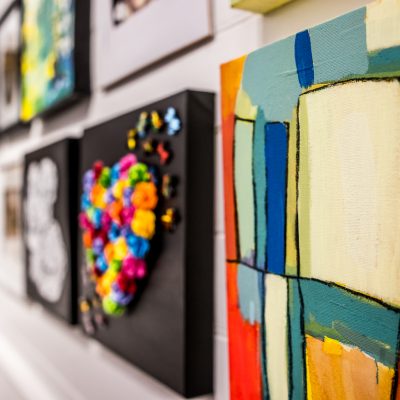
Creative Directory
Explore and connect with creative people, groups & spaces in Tauranga and Western BOP

